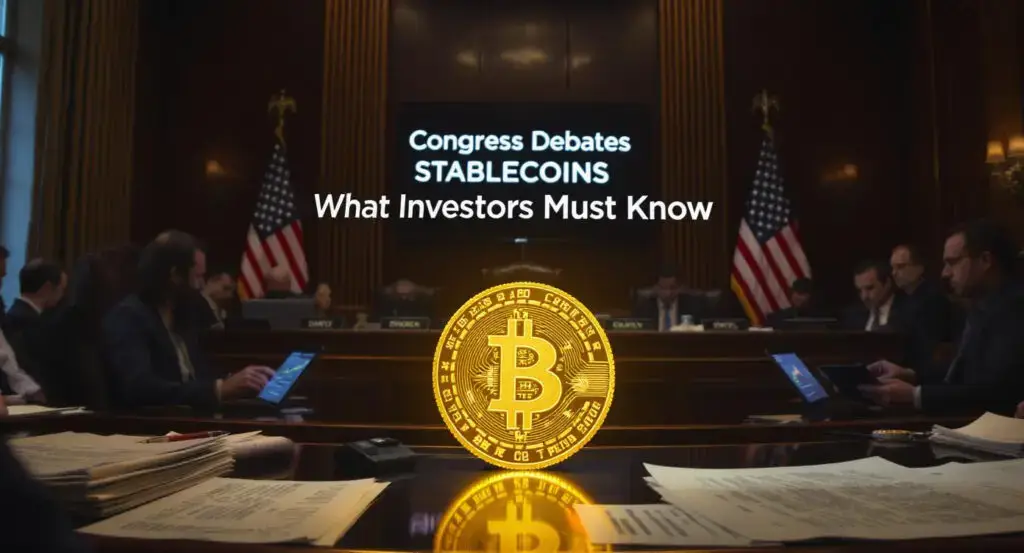A monumental shift is underway in Washington as Congress actively works on comprehensive legislation to regulate the booming stablecoin industry. This sector, which has exploded from a mere $10 billion valuation in June 2020 to a colossal $250 billion today, has undeniably captured the attention of lawmakers. The bipartisan effort aims to deliver a final stablecoin bill before the end of summer, a move that promises to significantly shape the future of digital assets and their integration into traditional finance.
The Stablecoin Phenomenon: A Digital Dollar Explained
To grasp the implications of the upcoming legislation, it is essential to understand what stablecoins are and their function within the crypto ecosystem. Most stablecoins are designed to maintain a 1:1 peg with the value of the U.S. dollar, effectively acting as “digital dollars.” This peg theoretically ensures that one stablecoin can always be exchanged for one U.S. dollar in cash, providing a crucial bridge between the volatile world of cryptocurrencies and the stability of traditional financial systems. This characteristic makes them invaluable for moving capital between these two distinct financial realms.
Market Dominance and Emerging Players
Currently, two stablecoins reign supreme in the market: Tether (USDT) and USDC. Together, they command approximately 85% of the entire stablecoin market’s value, underscoring their critical role in daily crypto transactions. However, the landscape is not static, with new players continually emerging. Notably, World Liberty Financial, a crypto venture reportedly affiliated with the Trump family, has recently issued its own stablecoin, signaling a growing interest from diverse entities in this rapidly expanding sector. The prevalence of stablecoins is further highlighted by the fact that five of the top 50 cryptocurrencies by market capitalization are now stablecoins, easily identifiable by their consistent $1 price point.
Congressional Showdown: Bridging Legislative Divides
The path to enacting stablecoin legislation is navigating a complex political terrain. While the objective is to have a final bill signed into law by President Trump later this summer, congressional lawmakers are actively working to reconcile differences between competing pieces of legislation originating from both the House and the Senate. This process, often fraught with political maneuvering, has become even more intricate due to the involvement of a Trump-affiliated crypto venture in the stablecoin industry, adding another layer of complexity to the ongoing debates.
Unpacking Key Points of Contention
According to Representative French Hill (R-Ark.), Chairman of the House Financial Services Committee, three major areas of disagreement must be resolved between the two chambers. The first critical issue revolves around the oversight of foreign stablecoin issuers. Legislators are demanding strict assurances that foreign entities, such as Tether which is not U.S.-based, will be held to the same rigorous standards as their domestic counterparts. This aims to prevent regulatory arbitrage and ensure a level playing field.
Regulatory Authority: A Shifting Landscape
The second point of contention centers on determining which regulatory bodies will hold authority over stablecoins at both the state and federal levels. While the Securities and Exchange Commission (SEC) might have been the presumptive choice a year ago, discussions now suggest that another regulatory body could take the lead. This debate reflects the broader challenge of fitting innovative digital assets into existing regulatory frameworks and ensuring comprehensive oversight without stifling innovation.
Who Gets to Issue Stablecoins?
The third major question facing lawmakers concerns the right to issue stablecoins. Historically, a clear demarcation has existed between banking and commerce in the United States. While banks and traditional financial services firms are generally expected to issue stablecoins, the debate extends to whether Silicon Valley tech companies or entities linked to political figures should also possess this right. This discussion touches upon fundamental questions of financial control, market concentration, and potential conflicts of interest within the burgeoning digital economy.
Strategies for Stablecoin Investment
For investors looking to engage with stablecoins, the evolving regulatory landscape presents several potential strategies. A direct approach involves investing in stablecoin issuers themselves, such as Circle Internet Group (CRCL), which recently went public and is responsible for USDC, the world’s second-largest stablecoin. Alternatively, investors might consider publicly traded companies that are actively integrating stablecoins into their operations, like PayPal (PYPL), which launched its PayPal USD (PYUSD) stablecoin in August 2023, now valued at $1 billion.
Companion Stablecoins and Yield Opportunities
Another strategy involves focusing on cryptocurrencies that have developed “companion” stablecoins. For instance, Ripple, the company behind the XRP token, introduced Ripple USD (RLUSD) in December 2024 with the goal of boosting activity and demand for the XRP blockchain and token. Beyond direct investment, innovative “stablecoin yield strategies” are gaining traction. While it may seem counterintuitive to invest in an asset pegged at $1, these strategies allow investors to earn passive income, potentially offering higher returns than traditional bank accounts, by leveraging DeFi protocols or interest-bearing mechanisms.
The Road Ahead for Digital Dollars
Despite their perceived complexity, stablecoins have undeniably become one of the fastest-growing segments of the crypto world, commanding attention from investors and regulators alike. The impending stablecoin legislation, expected to be signed into law later this summer, promises to bring much-needed clarity and establish a defined framework for these digital assets. This regulatory momentum is anticipated to create further opportunities and drive innovation among the leading players in this burgeoning financial space, potentially reshaping how value is transferred and stored in the digital economy. Sources























